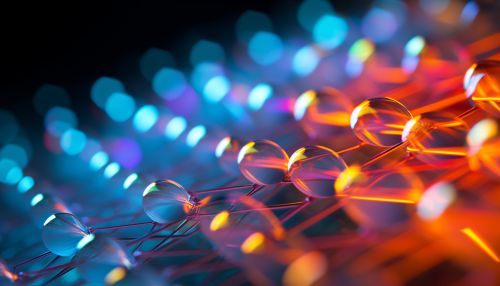Biological Implications of Quantum Dots
Introduction
Quantum dots (QDs) are nanoscale semiconductor particles that possess unique light-emitting properties. The potential applications of QDs in biology and medicine are vast, ranging from imaging and diagnostics to targeted drug delivery and photodynamic therapy. This article explores the biological implications of quantum dots, delving into their potential uses, benefits, and challenges in the field of biomedicine.
Quantum Dots: An Overview


Quantum dots are tiny particles, typically between 2 and 10 nanometers in diameter, made from semiconductor materials. Due to their small size, QDs exhibit quantum mechanical properties, including a phenomenon known as quantum confinement. This property allows the tuning of QDs' light emission properties by simply changing their size or composition. The light emitted by QDs can span a wide range of the spectrum, from ultraviolet to near-infrared, making them highly useful in various applications, particularly in biological imaging.
Applications in Biology and Medicine
Quantum dots have found numerous applications in biology and medicine, primarily due to their unique optical and electronic properties. These applications can be broadly categorized into imaging, diagnostics, and therapeutics.
Imaging
Quantum dots' unique light-emitting properties make them excellent candidates for biological imaging. Their broad absorption spectra and narrow emission spectra allow for multiplexed imaging, where multiple targets can be imaged simultaneously using different colored QDs. Moreover, QDs are photostable, meaning they do not bleach or blink under prolonged illumination, unlike conventional fluorescent dyes. This makes them ideal for long-term imaging studies.
Diagnostics
In the field of diagnostics, quantum dots can be used as fluorescent labels in various assays, including immunoassays and nucleic acid detection. QDs can also be used in the development of biosensors, where they can act as signal transducers, converting biological interactions into detectable signals. For instance, QDs can be used in the detection of cancer biomarkers, infectious agents, and genetic disorders.
Therapeutics
Quantum dots also hold promise in the field of therapeutics. They can be used for targeted drug delivery, where QDs are conjugated with therapeutic agents and guided to specific cells or tissues. Additionally, QDs can be used in photodynamic therapy, a form of cancer treatment that uses light to activate a photosensitizing agent within the tumor, leading to the generation of reactive oxygen species that can kill cancer cells.
Challenges and Future Directions
Despite the potential benefits, the use of quantum dots in biology and medicine also presents several challenges. One of the main concerns is their potential toxicity. Many QDs contain heavy metals, such as cadmium, which can be toxic to cells and organisms. Therefore, much research is being conducted to develop safer QDs, either by using less toxic materials or by encapsulating the QDs in biocompatible coatings.
Another challenge is the efficient delivery of QDs to specific cells or tissues. This requires the development of effective targeting strategies, which can be complex and challenging to implement. Moreover, the long-term fate and degradation of QDs in biological systems is not fully understood and requires further investigation.
Despite these challenges, the field of quantum dots in biology and medicine is rapidly advancing, and it is expected that new applications and technologies will continue to emerge in the coming years.
